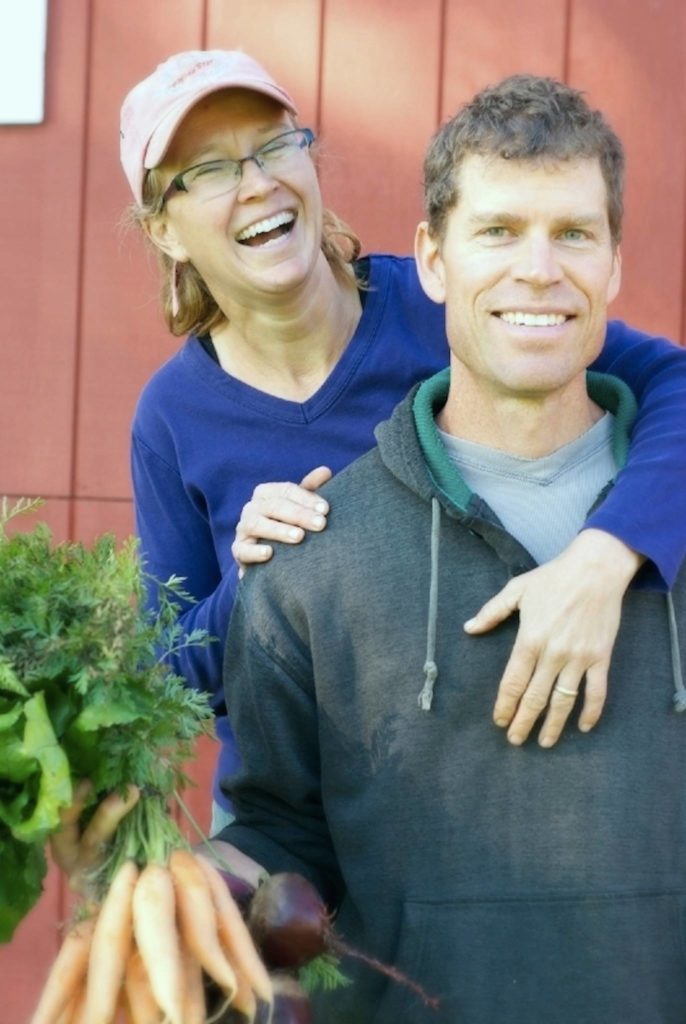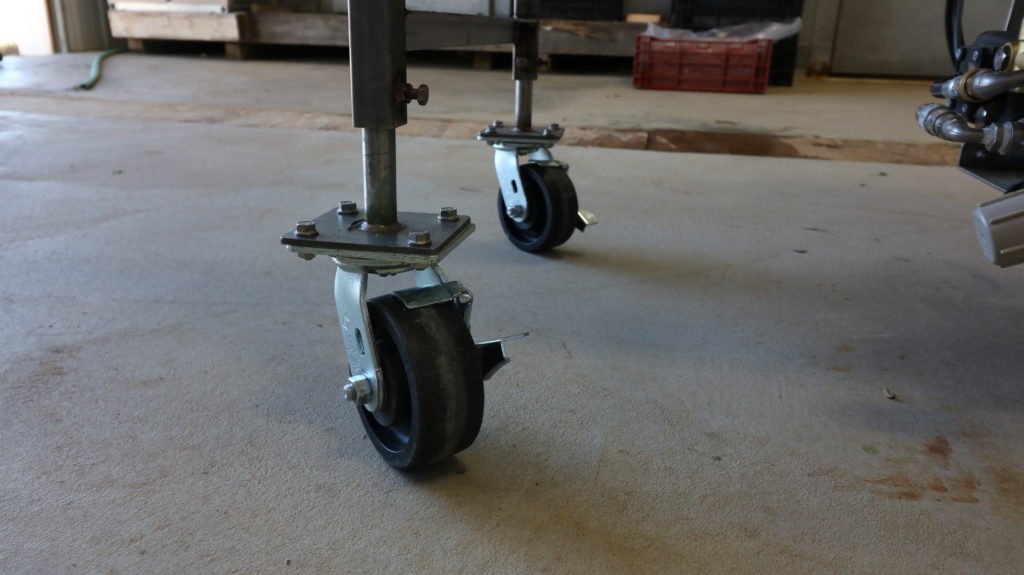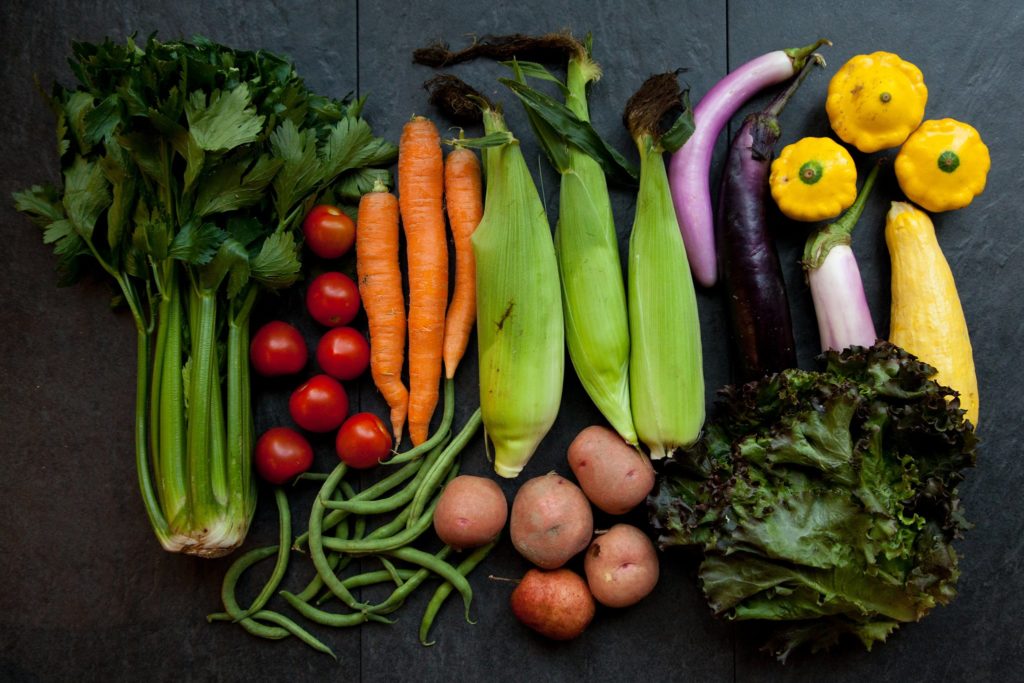 Picadilly Farm is owned and operated by Jenny and Bruce Wooster since 2006. Their farm is located in the South East Corner of New Hampshire in Winchester and has about 30 acres in production. They provide fresh produce to over 1,000 families through CSA shares spread across New Hampshire, Vermont, and Massachusetts.
Picadilly Farm is owned and operated by Jenny and Bruce Wooster since 2006. Their farm is located in the South East Corner of New Hampshire in Winchester and has about 30 acres in production. They provide fresh produce to over 1,000 families through CSA shares spread across New Hampshire, Vermont, and Massachusetts.
Bruce reached out to share that he has an AZS Rinse conveyor and offered up his thoughts on the equipment as well.
Picadilly farm is generally a pretty low tech farm. However, this piece of equipment was a good fit for their scale of production and provided a major upgrade in efficiency largely by creating a standard flow of the washing process. Adopting the rinse conveyor into their practices also provided a great ergonomic improvement from the previous practice of hand washing everything in tubs.
This machine has great versatility but it takes a little bit of dialing in for each crop. Because of this, using it daily on a wide range of crops may not be the best fit for a farm looking to wash their products in a random order or small quantities at a time. This machine may be scaled a bit large for a small farm operation managing 1-5 acres.
Generally, when the rinse conveyor is set up in the morning, the lower basin is filled with water and dosed with the proper amount of sanitizer. They begin washing the raw products (like arugula) that is cleaner from the start, first, to not immediately muddy up the water with a dirtier crop (like carrots). A typical day may consist of one to two batches of water with a clean-out of the mud in between.
User Feedback
One major downside of the rinse conveyor is that it throws out a lot of mist. This mist frequently contains sanitizer which can cause irritation! His team chooses to wear safety goggles while working in close proximity of the machine. Bruce has experimented with different nozzles, swapping the flat 40-degree fan with a narrower 25 degree along with varying the pressure of 800-1500psi. You can also change the speed that the nozzles spin by adjusting their mounting position on the arm which they are affixed. He experimented with adjusting that as well in an effort to minimize the mist. A combination of settings may have improved the situation but none were a sure solution to the problem. He did also observe some damage to the skin of the carrots when he switched over to the narrower nozzles. To add to this, the pumps and nozzles are pretty noisy and the crew often wears ear protection while the machine is running.
An additional step is taken when they wash really dirty crops (ie roots). They choose to either dunk or pre-spray them to ensure they come out of the machine clean and to minimize any chance of the need to pass them through a second time.
EFFICIENCY TIP: Send the product, then the crate through and put the produce back in the same crate!
Upgrades
One improvement that has been made was the installation of an electronic valve to put inline which turns off the high-pressure pump if the water supply does not meet the required demand. This saves the pump from running with-out wanter which could cause the pump to fail and avoid a costly repair.

They also put their rinse conveyor on wheels so they can slide it off to the side when not in use and recommend others do the same.
Picadilly farm uses the rinse conveyor for washing bunched products. One of the tricks to retaining crop quality is to use a 2″ ball valve to throttle back the flow so the showering water doesn’t bruise the leaves against the conveyor belt.
What crops do you use it for most?
Mostly bunched crops including…
- Scallions
- Fresh onions
- Leeks
- Carrots
- Beets
- Arugula
- Cilantro
- Radishes
How Much did it cost?
He paid $5,484 for this machine and it came with an upgraded chain than what normally would be supplied. Bruce was lucky enough to purchase this machine used and was only a year old when he got it. He was expecting to have to pay close to $7k for a new one.
Bruce provided a review on the VVBGA Listserv, his words are below.

Winchester, NH — Picadilly Farm. 2017 was our first year using a Rinse Conveyor from AZS Brusher, like the one Andrew Chamberlin reviewed in the last news report. Like his, ours has produce moving through a long box, being washed either by a first pump with re-circulating water, or a second pump with higher pressure fresh water rinse, or both. Unlike Andy’s, ours has no final brush clean as the produce transfers to a sorting table — we either let roots tumble into bulb crates on a table, or transfer bunches by hand into crates on a table. At the beginning, we transfer pre-dunked or sprayed roots onto the belt by pouring them on in a single layer, or transfer bunches by hand from the harvest barrels. Overall, we’ve improved for speed and organization and would buy this again. We’ve also been able to add sanitizer in the re-circulating tank, which works well for the bunches. Because the pressure rinse keeps a fresh supply of water washing through the tank, we don’t use sanitizer for crops that are rinsed that way. We used to wash the bunches in barrels on the floor, so ergonomics and speed are better in the conveyor, especially for bunches of beets, carrots, scallions, and onions. We used to wash roots in a barrel washer from Gindstone Farm, which did do a better job. The root washer we have needs to be re-built or replaced, and we’re waiting on FSMA news to see what we want to do for that.
Here are a few more details. The unit requires 240V electricity supply. AZS set us up with a quick connect fitting in the pressure rinse line, so we can switch from running the pressure rinse to running a power washer nozzle — great for washing crates, or washing the conveyor when we’re finished each day. There can be gallons of mud to clean out at the end of a roots wash. We used it to wash black bulb crates sometimes, just by running them through empty. We bought ours used, which came with a more expensive conveyor chain then AZS normally was including, and I’m not sure what difference that may make for something like sensitive summer squash skins. Initially, we found that leaves from lettuce heads and arugula bunch leaves were getting bruised. So we installed a 2″ ball valve in the circulation run, which allowed us to restrict flow enough to prevent the bruising but not enough to damage the pump. We also found that the pressure nozzles throw out a lot of mist — about half our crew preferred to wear goggles for that (along with ear protection for the noise). We have more trials to do, to see if a different nozzle size or operating pressure can either reduce the mist or provide an even better scrub wash for the roots, without damaging the skins.
___________________________________________
Bruce Wooster
Picadilly Farm
264 South Parrish Rd
Winchester, NH 03470
(603) 236-1930
